AN EXPLORERS GUIDE
Blue Ridge & Smoky Mountains

AN EXPLORERS GUIDE
Blue Ridge & Smoky Mountains
Jim Hargan
with photographs by the author
FOURTH EDITION

Copyright 2002, 2005, 2008, 2012 by Jim Hargan
All rights reserved. No part of this book may be reproduced in any form or by any electronic or mechanical means, including information storage and retrieval systems, without permission in writing from the publisher, except by a reviewer, who may quote brief passages.
Interior photographs by the author unless otherwise specified
Maps by Erin Greb Cartography, The Countryman Press
Text and cover design by Bodenweber Design
Composition by PerfecType, Nashville, TN
Explorers Guide Blue Ridge & Smoky Mountains
978-0-88150-968-7
Published by The Countryman Press, P.O. Box 748, Woodstock, VT 05091
Distributed by W. W. Norton & Company, Inc., 500 Fifth Avenue, New York, NY 10110
Printed in the United States of America
10 9 8 7 6 5 4 3 2 1
EXPLORE WITH US!
Welcome to the 4th Edition of The Blue Ridge & Smoky Mountains: An Explorers Guide, the definitive guide to the tallest mountains in the East. Its the perfect companion for exploring the Great Smoky Mountains National Park, the Blue Ridge Parkway, and all the ridges in between. Here, youll find thorough coverage for both sides of the TennesseeNorth Carolina state line, with detailed listings on the best sight-seeing, outdoor activities, restaurants, shopping, and bed-and-breakfasts. Like all Explorers Guides, this book is an old-fashioned, classic travelers guide, where an experienced and knowledgeable expert helps you find your way around in a new area or explore some fascinating corners of a familiar one.
WHATS WHERE
In the beginning of the book youll find an alphabetical listing of special highlights and important information that you may want to reference quickly. Youll find advice on everything from Area Codes to Wildlife.
LODGING
Weve selected lodging places for inclusion in this book based on their merit alone; we do not charge innkeepers for inclusion. Prices: Please dont hold us, or the respective innkeepers, responsible for the rates listed as of press time in late 2011. Changes are inevitable. At the time of this writing, the state and local room tax ranged from 6 to 11 percent.
RESTAURANTS
In most chapters please note the distinction between Eating Out and Dining Out. By their nature, restaurants included in Eating Out are generally inexpensive. A range of prices is included for each entry.
KEY TO SYMBOLS
 Child-friendly. The crayon denotes a family-friendly place or event that welcomes young children. Most bed-and-breakfasts prohibit children under 12.
Child-friendly. The crayon denotes a family-friendly place or event that welcomes young children. Most bed-and-breakfasts prohibit children under 12.
 Handicapped access. The wheelchair icon denotes a place with full Americans with Disabilities Act (ADA) standard access, still distressingly rare in these remote areas.
Handicapped access. The wheelchair icon denotes a place with full Americans with Disabilities Act (ADA) standard access, still distressingly rare in these remote areas.
 Rainy day. The umbrella icon points out places where you can entertain yourself but still stay dry in bad weather.
Rainy day. The umbrella icon points out places where you can entertain yourself but still stay dry in bad weather.
 Pets. The dogs paw icon identifies lodgings that allow petsstill the exception to the rule. Accommodations that accept pets may still charge an extra fee or restrict pets to certain areas, as well as require advance notice.
Pets. The dogs paw icon identifies lodgings that allow petsstill the exception to the rule. Accommodations that accept pets may still charge an extra fee or restrict pets to certain areas, as well as require advance notice.

CONTENTS
MAPS
INTRODUCTION
Some travel experiences are for passive enjoyment, for being gently led from meal to pastime to meal. Not so the Smokies. The Smokies and the Blue Ridge are for involvementfor finding the perfect little inn with broad views from an antique-furnished room, for discovering the wonderful meal superbly prepared at an unpretentious roadhouse, for digging up the odd little corner, the unforgettable museum, the remarkable site. The Smokies and the Blue Ridge are for exploring.
And this is a guide for explorers. It is a guide for finding your way down a winding mountain road to a beautiful river, a quiet log cabin, or a wide view. This guide seeks out the memorable, the unique, and the worthwhilewhether it be a place to visit, a place to shop, a place to eat, or a place to stay. It excludes the ordinary or routine placesafter all, there are plenty of those back home. And, unlike many guides, it doesnt charge fees or accept advertising. This is a collection of personal recommendations.
This guide centers on two of the most popular national park lands in the nation: the Great Smoky Mountains National Park and the Blue Ridge Parkway. In doing so it covers the 40 highest peaks of the East, the most biodiverse forests in temperate North America, scores of waterfalls, and hundreds of panoramic views. However, this guide goes well beyond the boundaries of the national parks to cover all of the surrounding mountains and forests, the small towns and the settled valleys. In it youll find tidy county seats, brick-front downtowns little changed in half a century, artist colonies hidden away in remote valleys, and well-tended farms and old log cabins that welcome overnight visitors. Youll find the homes of Carl Sandburg and Daniel Boone, the summer estate of an aristocratic South Carolina governor, and the log cabin of a frontiersman North Carolina governor. And youll find lots of outdoor activities as wellwhitewater sports, horseback riding, still-water boating, fishing, rock climbing, snow skiing, and golf.
Specifically, this guide covers the most rugged areas of the Souths two great mountain ranges, the Blue Ridge and the Smokies/Unakas. The Blue Ridge, with its long series of gray cliffs facing toward the distant Atlantic, defines the eastern edge of the region. A set of mile-high ridges defines the western edge, variously named (from south to north) the Unicoi Mountains, the Great Smoky Mountains, the Bald Mountains, the Unaka Mountains, the Yellow Mountains, and the Stone Mountains. Together, these are called the Unakas (you-NAY-kuhs) by geologists, and the Smokies by ordinary folk; this book splits the difference and calls them the Smokies/Unakas.
This guide divides this 10,000-square-mile area (larger than New Jersey) into 21 chapters. Each chapter takes in a coherent area with a good range of sites, activities, and places to stay. The chapters are grouped into four broad areas, each a major region worthy of a long trip. The Great Smoky Mountains National Park gets four chapters to itself, making up one entire part of the book. The Blue Ridge Parkway, over 250 miles long and very skinny, also gets four chapters, spread throughout the first half of the book; these chapters always have Blue Ridge Parkway in their titles. The remaining chapters cover the areas in between the two great national parksfrequently as rugged, as wildly beautiful, and as entertaining as the parks themselves.
This guide gains strength from being part of an established series known for its high standardsthe Countryman Presss
Next page

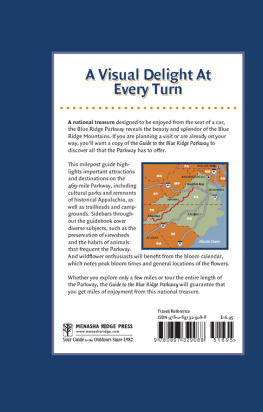
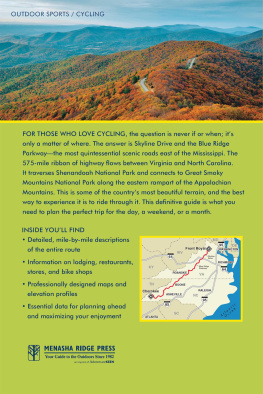
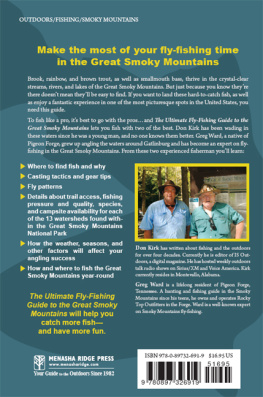
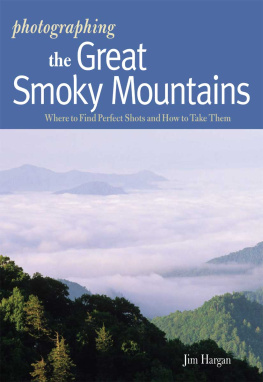
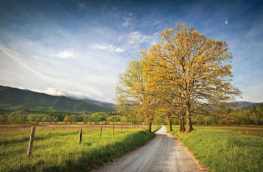
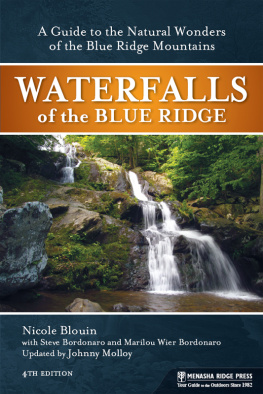


 Child-friendly. The crayon denotes a family-friendly place or event that welcomes young children. Most bed-and-breakfasts prohibit children under 12.
Child-friendly. The crayon denotes a family-friendly place or event that welcomes young children. Most bed-and-breakfasts prohibit children under 12. Handicapped access. The wheelchair icon denotes a place with full Americans with Disabilities Act (ADA) standard access, still distressingly rare in these remote areas.
Handicapped access. The wheelchair icon denotes a place with full Americans with Disabilities Act (ADA) standard access, still distressingly rare in these remote areas. Rainy day. The umbrella icon points out places where you can entertain yourself but still stay dry in bad weather.
Rainy day. The umbrella icon points out places where you can entertain yourself but still stay dry in bad weather. Pets. The dogs paw icon identifies lodgings that allow petsstill the exception to the rule. Accommodations that accept pets may still charge an extra fee or restrict pets to certain areas, as well as require advance notice.
Pets. The dogs paw icon identifies lodgings that allow petsstill the exception to the rule. Accommodations that accept pets may still charge an extra fee or restrict pets to certain areas, as well as require advance notice.